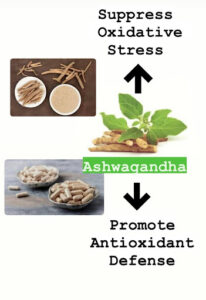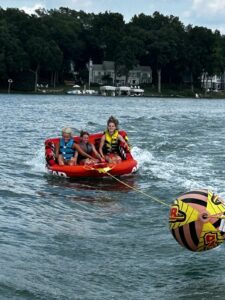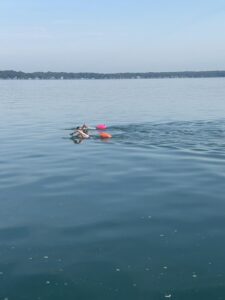 By: Katja Opfer
By: Katja Opfer
My second Iceman marks the end of my second year on TAMJD, and I have been taking some time to reflect on everything we accomplished this year. It seems like I raced practically every weekend from April to November, adding up to over thirty races in four different disciplines (mountain bike, gravel, cyclocross, and road).
My season started off strong at Barry Roubaix in April. After winning the 18-mile “Chiller” last year, I moved up to the 36-mile “Thriller” and won first overall female, setting a new course record in the process.
Englewood in mid-May was my first national-level race of the season, where I got to test my strength and skills against girls from all over the country. I had improved enough from last year to place fifth in both XCO and short track, my first national podiums.
These early-season successes reassured me that my winter training was paying off.
My biggest challenge this year was taking on the Marathon MTB National Championship in Auburn, Alabama in mid-June. I went into this race feeling confident about my preparation. The metabolic testing I had done with Athletic Mentors in the spring helped my coach and I determine my hydration and nutrition strategy for this race. The heat and humidity in Alabama had to be considered, but luckily for me, I was used to riding in similar conditions in Michigan. Many racers from out West were forced to DNF during this 40-mile race because they were not used to the high heat and humidity. My USWE pack allowed me to carry a large volume of Skratch mix so that I would not become dehydrated in the heat. Timing was everything; we meticulously planned how much water I needed to drink, and when I would drop my pack and get water bottles or ice socks from my parents at the feed stations. We also took the terrain into account. There were many sharp, loose rocks on the trail, which caused several of my competitors to get flats during the race. I erred on the side of caution by running inserts in my tires, and I carried CO2 and plug tools just in case. I also did not know that my category would be starting with several other women’s age groups, which meant I had to pass many women whom I wasn’t even racing against just to catch up to the other girls in my category.
Marathon Nationals was by far the toughest, most grueling race I’ve ever done. The pace was fast from the start, the weather was far from ideal, and the trail was extremely fatiguing. The last few miles seemed to stretch on forever; every time I glanced down at my Garmin, it seemed I hadn’t covered much distance at all. I had to use 100% of my effort and energy to make it across that finish line, winning my first National Championship in the 15-16 age group. Then I took a long and well-deserved nap! USA Cycling held a nice awards ceremony that evening, and after my podium I was surprised when Hannah Otto, a professional endurance cyclist from California who came in eighth in the Life Time Grand Prix this year, leaned over and congratulated me!
In mid-June, I had the opportunity to race at Tour of America’s Dairyland (ToAD) for the first time, a series of road criterium races in and around Milwaukee, Wisconsin. I had only done a few crit races before at Waterford, and I really enjoyed spending the week in Milwaukee sharing a house with all my teammates. Since I was racing in cat 5, my team suggested I race up an age group in 17-18 so I would have more competition, and my coach helped me prepare for the challenge of five consecutive days of crit racing. I won the first race of the junior series in a sprint finish, but every race after that seemed to get more difficult. I lost multiple sprints, but still managed to hold on to the points lead. On the final day, I felt some pressure because I had to finish in front of the second-place girl in the points to win the overall series. The weather decided it had other plans for me and poured on us during my race. I was not used to having so little traction with slick, skinny tires on wet roads. On the final lap I took a turn too wide and slid all the way into the curb. (Turns out that crashing in the rain is not as bad as dry concrete, so the road rash was minimal.) I still managed to finish the race in sixth place, good for second in the overall series. The atmosphere at ToAD felt like a car race; watching the pros whizzing by and having announcers and cash prizes made the whole scene very exciting and professional.
We returned to Bear Creek in Pennsylvania for Mountain Bike Nationals in mid-July. My family had just moved across the state, which was pretty stressful, so I was a little nervous about my preparation for XCO and short track. During my practice I went over-the-bars in the hardest section of the course, which was a little disconcerting. XCO was as brutal as I remembered from the previous year, but I made an effort to save energy for the tech sections so I would feel more confident and less shaky. I was hoping for a top-10 finish, but my 24th starting position was far from ideal. I climbed up through the pack over the course of three laps and finished in 11th place—a little frustrated to be so close to my goal, but in retrospect I am happy with my result. The short track course was longer this year, which played well to my skill set, as it was more technical and had more climbing. I was thrilled to place 6th from a 26th starting position, only one step off the Nationals podium, competing against the very best girls in the country!
My training plan had me take a break in August after racing the Ore to Shore 48-mile Hard Rock for the first time, where I placed third overall on a really fun and beautiful course. I also loved spending some time in Marquette with my family and friends. Then I turned my focus to gravel, as I geared up for Gravel Nationals in Gering, Nebraska in early September. This was the furthest I have ever traveled for a race (15 hours over two days) and the landscape and terrain were very different from anywhere I’ve ever raced. The long drive was worth it, as I won my second national championship of the year on a fast-rolling 58-mile course. 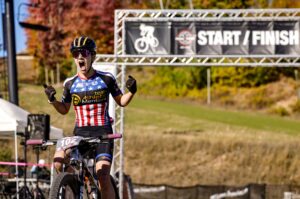
This fall I had another great MiSCA season, riding with my new scholastic team, the Southwest Michigan ThunderCats, and securing my second Varsity State Championship. Our team is very young, and I really enjoyed mentoring the younger kids throughout the season while also exploring the trails around my new home.
 I rounded out the season with a couple of fun Michigan cyclocross races and then set my sights on Iceman, where I was seeking redemption after a difficult race last year. This time I was able to hang on with the lead pack of pro women for almost the entire race, when I got dropped on one of the last climbs. I finished 11th, one spot better than last year and still just outside the top 10, but the field was much stronger than last year and I was racing multiple Life Time Grand Prix and international pros, so I am extremely proud of my result.
I rounded out the season with a couple of fun Michigan cyclocross races and then set my sights on Iceman, where I was seeking redemption after a difficult race last year. This time I was able to hang on with the lead pack of pro women for almost the entire race, when I got dropped on one of the last climbs. I finished 11th, one spot better than last year and still just outside the top 10, but the field was much stronger than last year and I was racing multiple Life Time Grand Prix and international pros, so I am extremely proud of my result.
Finally, I am excited to share that earlier this fall I was offered and accepted a spot on the Donovan Racing National Team for 2025. I see this move as an important transition to support my goals of racing at the national level, and I am really excited to start this next chapter in my cycling career. I am happy to continue working with Athletic Mentors’ coach Terry Ritter and will be able to maintain my relationship with TAMJD. I am extremely grateful for all the opportunities and experience I have gained over the past two years on TAMJD, and while this move is bittersweet, I cannot wait to see where the next year takes me!
The post The Year I Raced Everything, Everywhere appeared first on Team Athletic Mentors.
 One thing to consider when preparing for a cold weather run is what clothes you’re going to wear. The temperature should be taken into account, especially in fall and winter.
One thing to consider when preparing for a cold weather run is what clothes you’re going to wear. The temperature should be taken into account, especially in fall and winter. 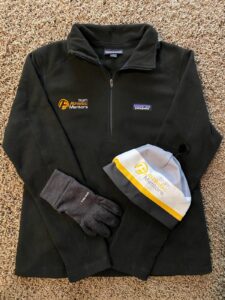 When running in the cold, a lot of people forget about their head. By wearing a hat when running you can help your body stay warm. Your body can lose up to 10% of body heat from the head being exposed to the cold. If you wear a hat, you want to make sure it’s not too hot, causing you to overheat. You can buy a lightweight beanie from any sports store. A neck gaiter that can be pulled up over your face can be useful.
When running in the cold, a lot of people forget about their head. By wearing a hat when running you can help your body stay warm. Your body can lose up to 10% of body heat from the head being exposed to the cold. If you wear a hat, you want to make sure it’s not too hot, causing you to overheat. You can buy a lightweight beanie from any sports store. A neck gaiter that can be pulled up over your face can be useful.



 Our Hockey Site
Our Hockey Site Team AM
Team AM







